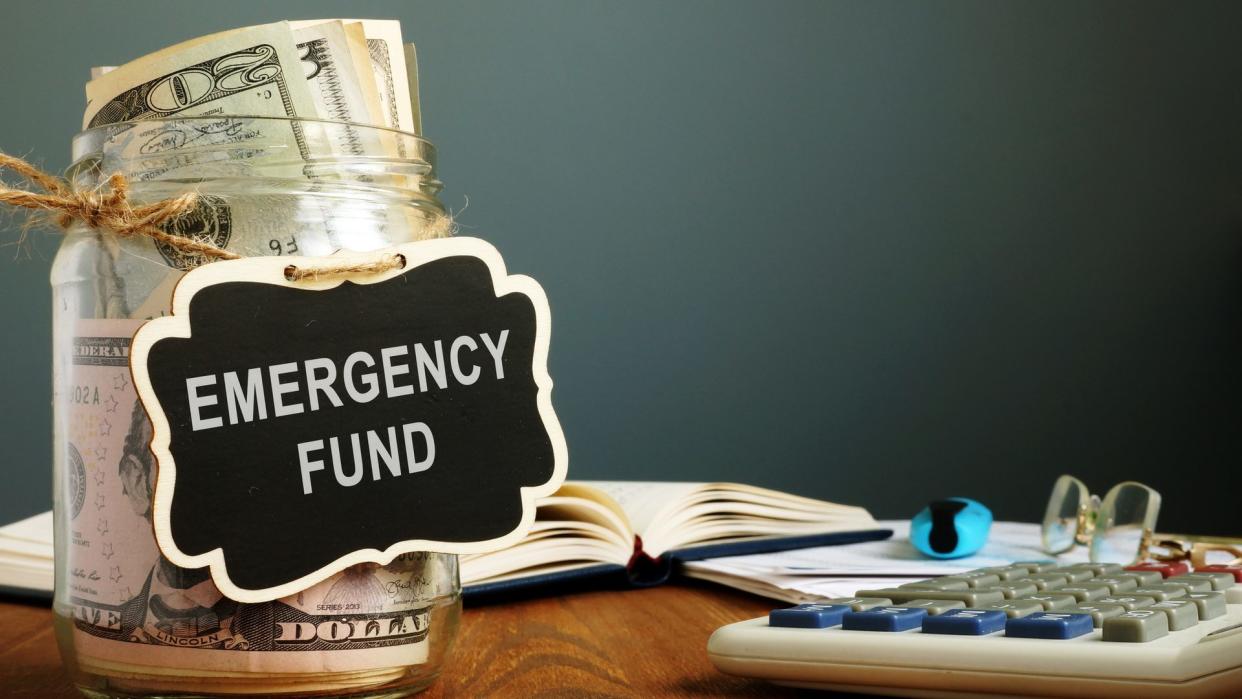How To Avoid Going Into Debt To Pay for an Emergency

The average American is treading on thin ice when it comes to financial preparedness.
A new GOBankingRates survey of more than 1,000 adults found that half of the population doesn’t have any emergency savings at all, and a vast majority of those who do have only a few hundred dollars to fall back on — a few thousand, at most.
See: How Much Americans Have in Their Savings Accounts in 2023
Check Out: With a Recession Looming, Make These 3 Retirement Moves To Stay On Track
SNAP Benefits: How Long Do They Last?
When asked how they would deal with a costly crisis if one arose, those with savings naturally said they would tap their emergency funds. But among those with no savings or not nearly enough, most conceded that they would have to go into debt in order to manage a pricey predicament.
Some might be able to take out personal loans, which offer predictable fixed installments and tend to have comparatively modest interest rates. But most people would have to resort to credit cards, which means saddling themselves with high-priced and hard-to-manage revolving debt that can quickly spiral out of control.
If you’re among the multitudes with no emergency fund or one that’s dangerously inadequate, you can do better than relying on plastic or a personal loan in a time of crisis.
The trick is to act now before the crisis arrives.
No Emergency Fund Usually Means No Budget
Millions of Americans are in such dire straits that they simply can’t spare a single dollar to put into savings in any given month. But for many others — even when money is tight — a modest emergency fund is within reach if they would only take the time to create a budget and a spending plan.
There is simply no better way to make every dollar count.
“Creating an emergency fund requires good budgeting, which allows you to plan for spending on necessary items and save for future needs,” said chartered financial analyst Greg Wilson, co-founder of personal finance site ChaChingQueen. “When setting up a budget, leave room for unexpected costs by including them in your regular monthly expenses. You can save regularly using automated transfers or deposits into a separate savings account. This way, you won’t be tempted to use it when something comes up unexpectedly.
“Additionally, look at areas where you may be able to reduce spending in order to contribute more towards your emergency fund each month.”
If You Have a Budget, Coordinate Deposits With Your Pay Periods
Many people on shoestring budgets assume they can’t build emergency savings because they’ve maxed out their income and can’t realistically cut spending any further. But a few small tweaks to their budgeting strategies could create much more padding in their financial cushions.
“There are a couple of common challenges to saving money, and you can solve several of them with a single maneuver,” said real estate investor Brian Davis, founder of Spark Rental. “First, most people get paid biweekly, but they budget monthly. To resolve that difference, they take their annual income and divide it by 12. But that’s a losing strategy because in most months you can only count on two paychecks.
“Second, most people plan on setting aside their savings at the end of the month, based on what they didn’t spend. That means they rely on willpower and discipline to actually save anything. But inevitably, life — or temptation — get in the way.”
According to Davis, a more efficient strategy is to base your monthly budget on two biweekly paychecks — or four weekly paychecks — since that’s all you can count on in a given month.
“Decide how much you want to set aside for savings from those paychecks and then split that money off before it reaches your checking account. You can do that by either having your employer split your direct deposit or by setting up automated transfers to take place on each payday. From there, it’s simply a matter of never spending more each month than what you have in your checking account.”
Small Insurance Payments Now Can Prevent Big Expenditures Later
About 9% of the study’s respondents have $5,000 to $10,000 saved for emergencies. Another 9% or so have $10,000 or more. But even those aggressive savers — who have what appears to be ample savings — can be ruined by a single big-money emergency.
“I’ve often observed financially settled people wiping out their entire savings and taking out loans to pay off hospital bills for an unforeseen illness,” said entrepreneur Walter Lappert, president of Triad Drones.
It’s not just medical bills; home repairs, veterinarian bills or a culmination of several smaller emergencies all at once can quickly get out of hand even for diligent savers.
The solution in many cases is a healthy blend of insurance protection.
“Plan better now by having insurance coverage — such as health insurance, life insurance and property insurance — to provide financial protection in the event of an emergency,” said Gabriel Lalonde, CFP, president of MDL Financial Group. “Having insurance coverage can provide financial protection in the event of an emergency, reducing the need to rely on debt to cover unexpected expenses.”
More From GOBankingRates
This article originally appeared on GOBankingRates.com: How To Avoid Going Into Debt To Pay for an Emergency


